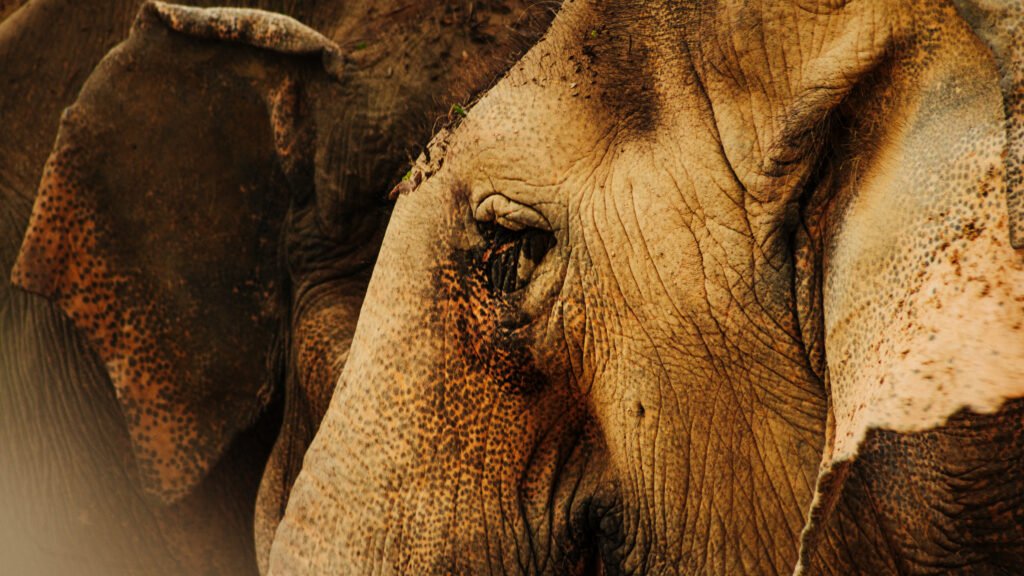In the region of Kanchanaburi, two elephants live out the remaining years of their elderly lives with all the great care and love they missed during their younger days. Their names are Malee and Kammoon.
Malee is about 85 to 90 years old. In her younger days, she used to work in the logging industry. Logging elephants were commonly used to carry trees in the forest. People used the bodies of these animals to carry wood through the mountains to reach the trucks that could not make it inside the forest. Many elephants passed away during this practice, thankfully, it is now illegal.
According to the caretakers, she is a very kind and gentle elephant, very smart and curious. She usually does not like to take the lead, often observing her friend Kammoon to go first. ‘Whenever her mahout catches her doing something she is not supposed to do, you can see the shame of regret on her face.’
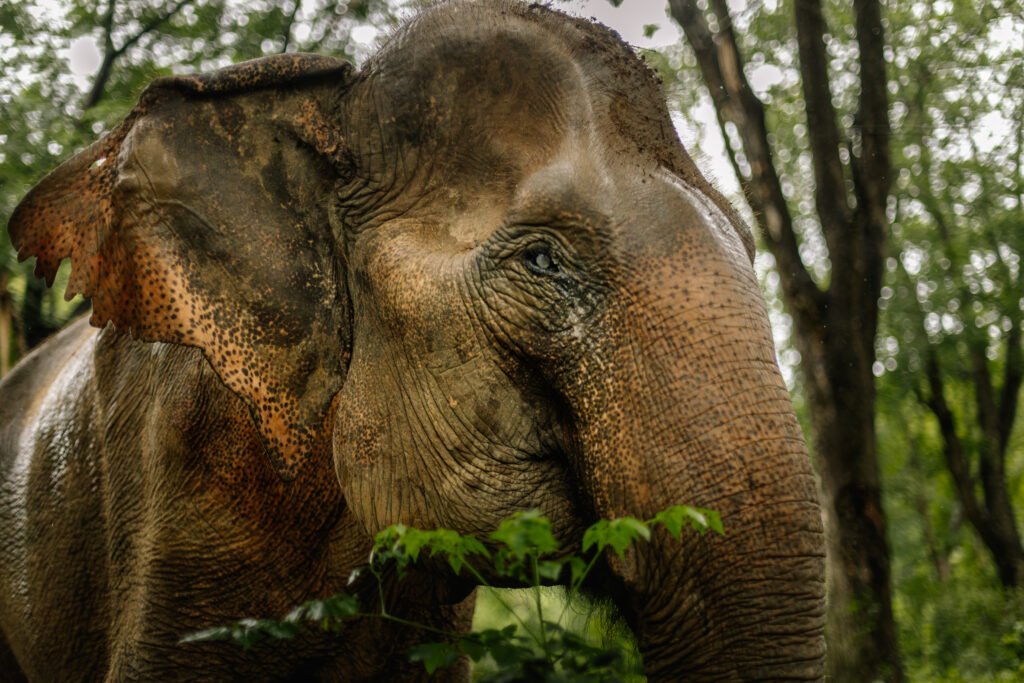
Kammoon is 80 to 85 years old. In the past, she was a begging elephant. Begging elephants worked in the big cities, within crowded streets. The mahout in charge would carry fruits and tricks with him and sell them to the tourists so they could have the experience of feeding the elephant. These elephants used to walk through the busy nights in Bangkok, sleeping under bridges or empty parking lots, walking on hot asphalt, and picking up all the vibrations of the traffic on her feet, one of her main tools of communication. This activity has become illegal now.
Kammoon is the complete opposite of Malee; she is very stubborn and usually acts before thinking. She really likes to mess with her mahout. When they catch her doing something she is not supposed to, she usually just does it faster!
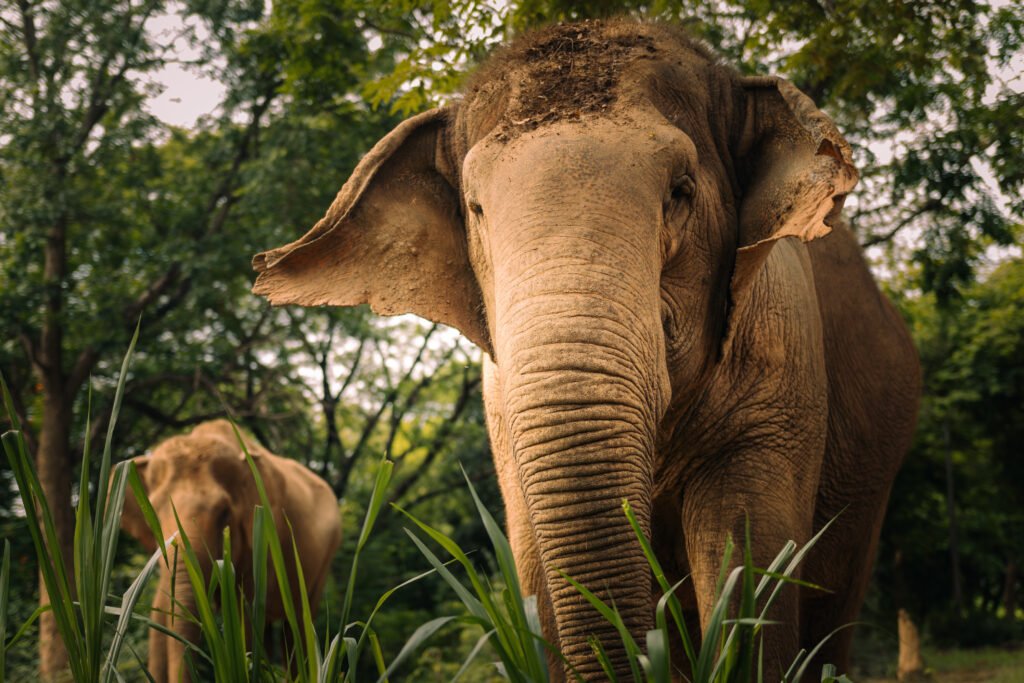
As volunteers of the Somboon Legacy Sanctuary, we lived within the territory of a huge resort; we shared cabins on the same streets, like neighbours in a small village. We had a few bikes at our disposal to move around, although they were not enough for everyone. You had to wake up early if you didn’t want to spend the rest of the day walking from one place to another, unless it was your free day, then you had no other choice.
The activities depended on the day, especially if there were visitors or not. If that was the case, some of us made the tour around. This was mainly based on observation and education. It was an innovative approach, offering enough entertainment and interactivity to “compete” with those centers where you can bathe or feed an elephant, while educating people so they become aware of why not to do it ever again and spread the word.
The facilities had a museum in place, where there was an illustrated explanation of the story of elephants through their and our history. It was impressive to see how much they were exploited, sometimes so creatively, but more importantly, to see how much they still are. In places that we are not even aware of, there are elephants still suffering and dying every day in consequence of human actions.
We prepared the fruit for them; they were too old to chew, so we cut watermelons and small bananas. We also embarked on the truck to cut some banana trees in nearby plantations. These trees only give fruit once in their life, so the farmers were happy for us to take them before replantation; it was a win-win situation. These elephants get dehydrated very easily, and these trees were the best way to keep them hydrated and fed. As you can guess, small fruits were not nearly enough for a 3500-kilogram mammal. The truck ride was an adventure itself; after a few days, you memorised the nearby route enough to remember when to kneel down to avoid getting hit by the branches, but still needed to keep an eye on the road once you where outside.
In the evening, we came back one last time to prepare rice balls. This was Malee’s favourite food; we made them by heating a huge amount of rice and mixing them with okra and other elements. Then, the Mahout hid some pills in them and fed them straight to the elephant’s mouth. They needed a lot of medication for their age, and on top of that, Malee had kidney stones. After suffering the same just a month earlier myself, I can’t even imagine the pain that she had to endure, considering the size of them was probably way bigger than mine.
The visit usually ended with a bath in the river, most certainly one of the most awaited activities for visitors and us. From a platform up the hill, we observed they walk to the shore and enter in the river; it was a magical moment of bonding and connection with their Mahout, where you could see the personalities and the type of connection they have with each other.

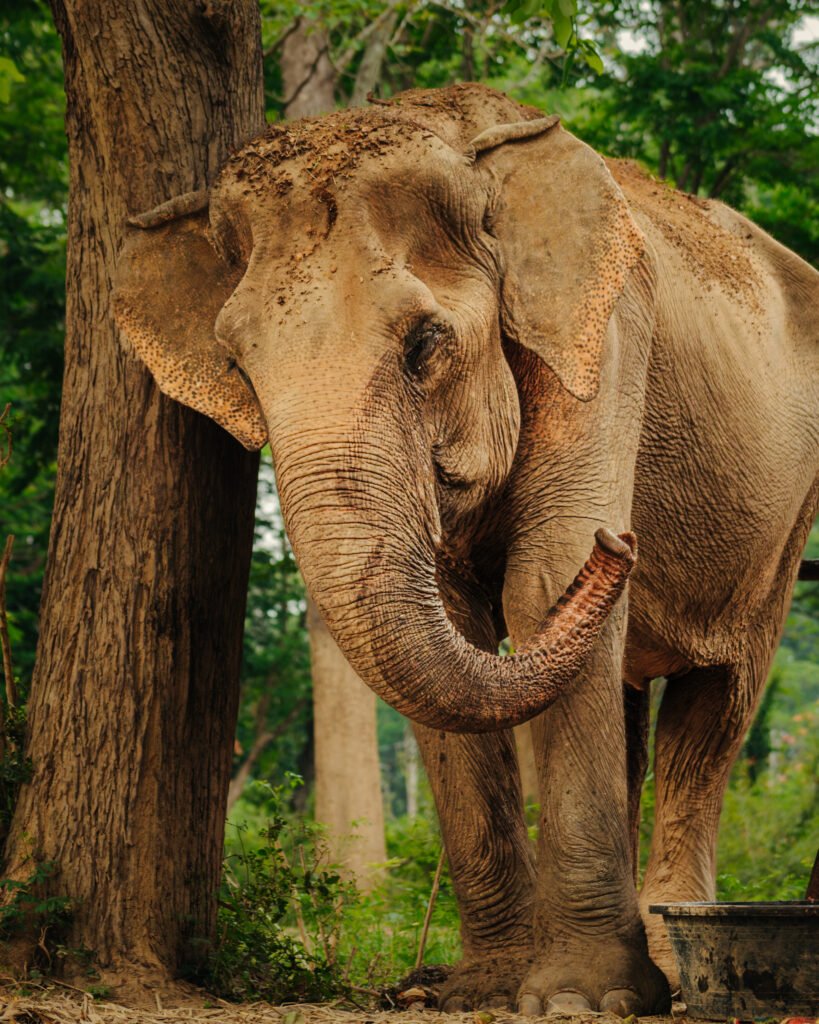
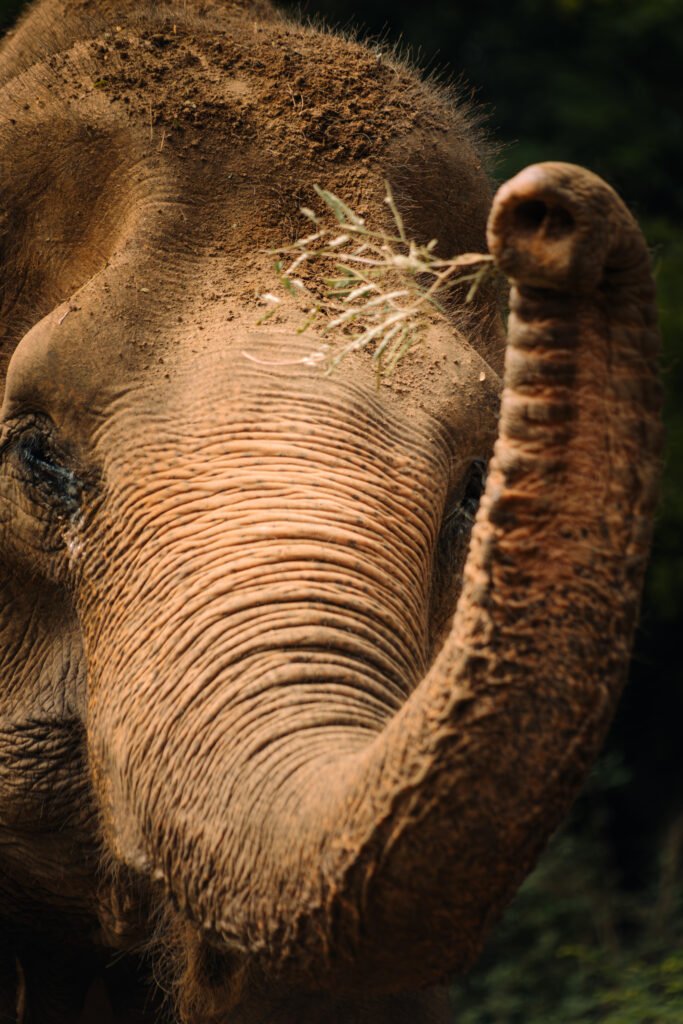
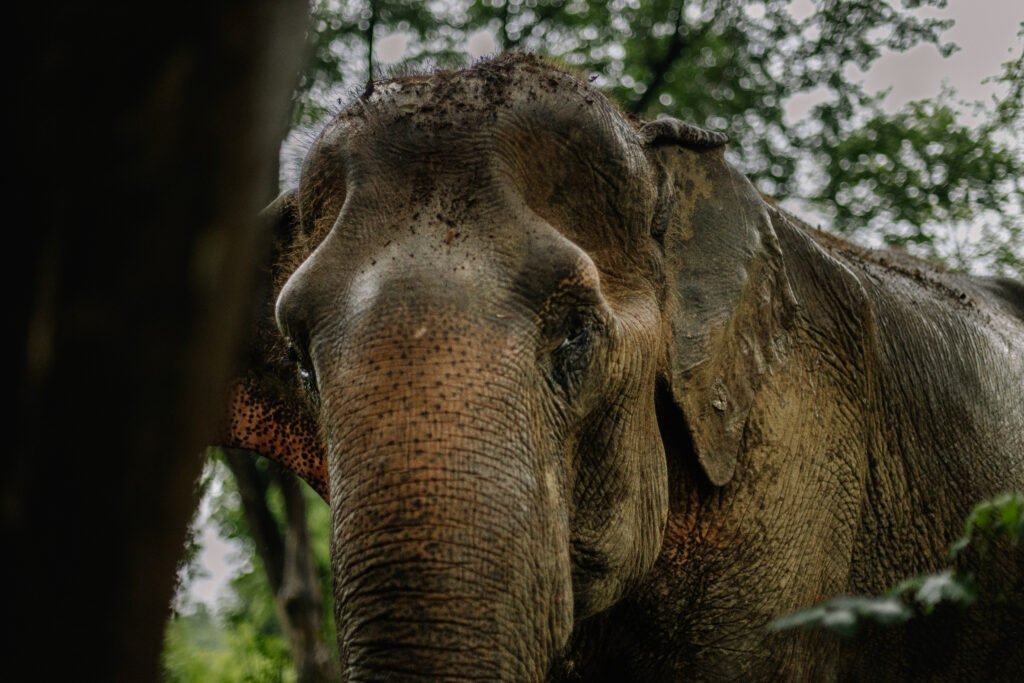

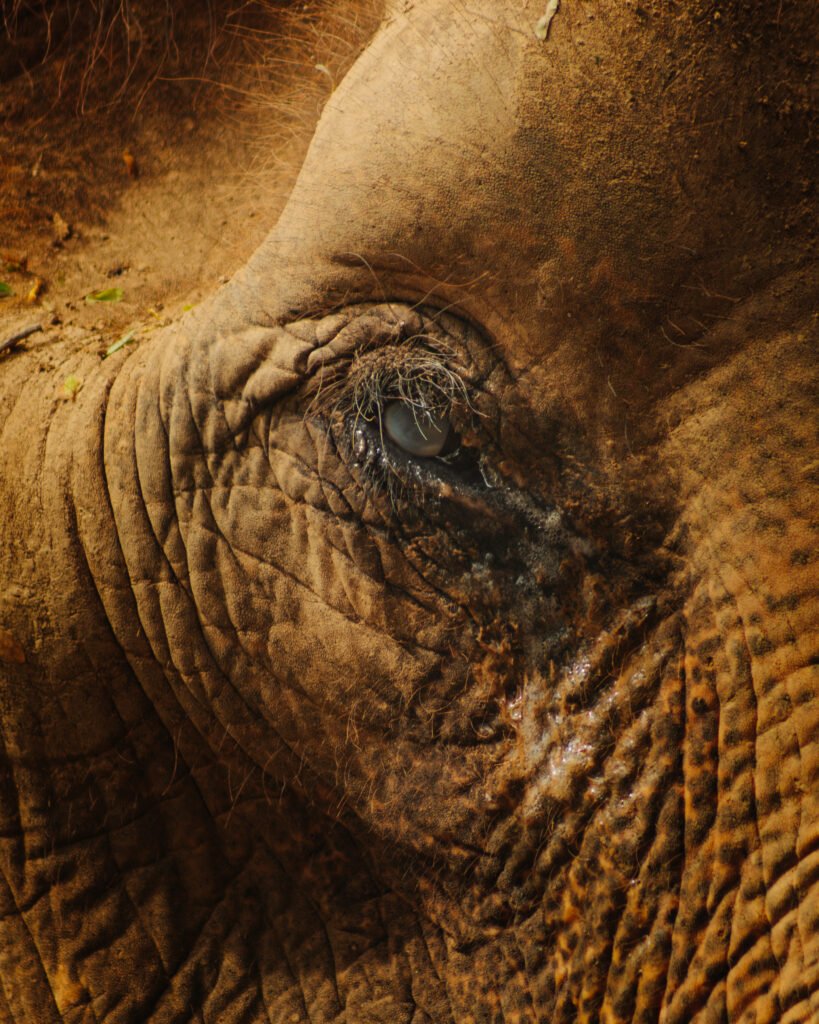

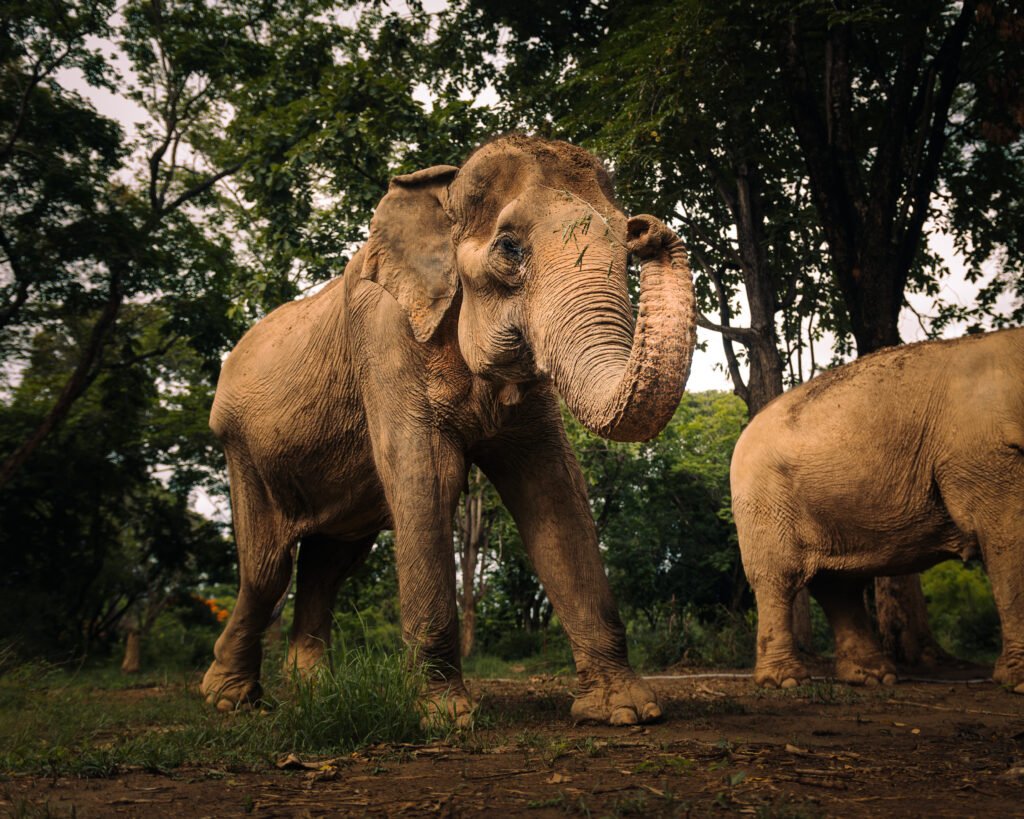
You can see more pictures of this story on my Portfolio: The Story of Malee and Kammoon
And learn more about this sanctuary in their website: Somboon.org

